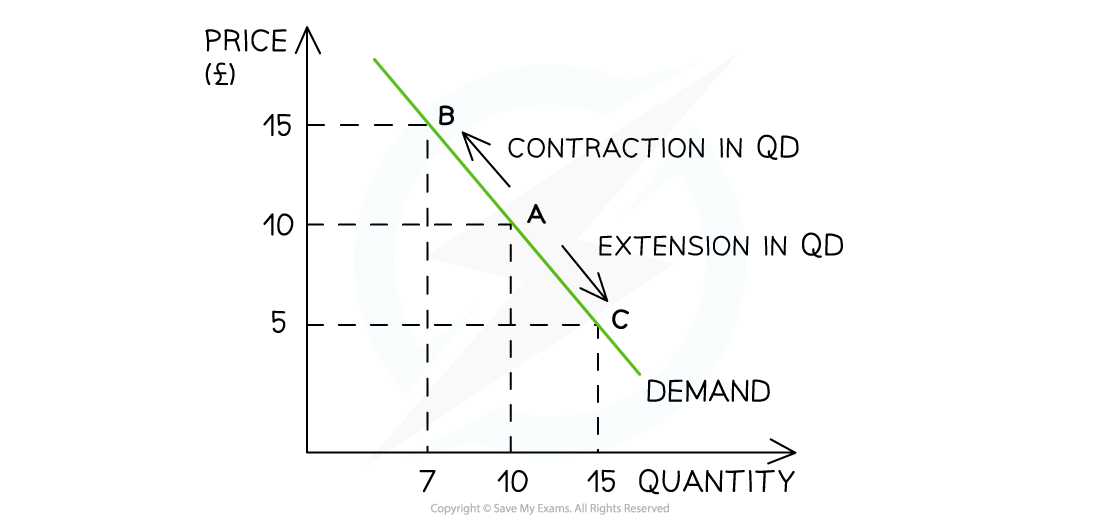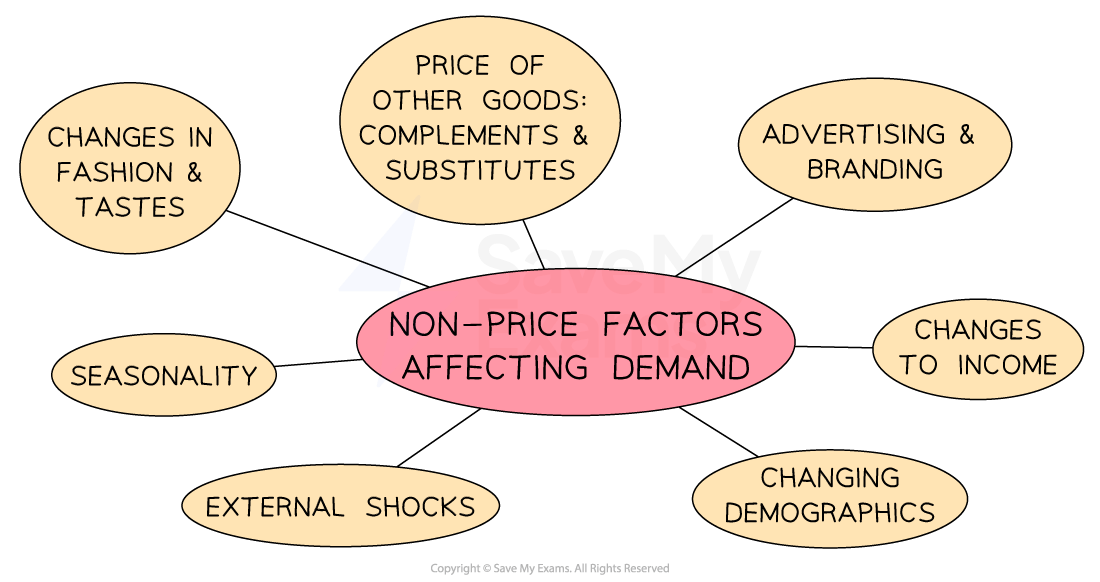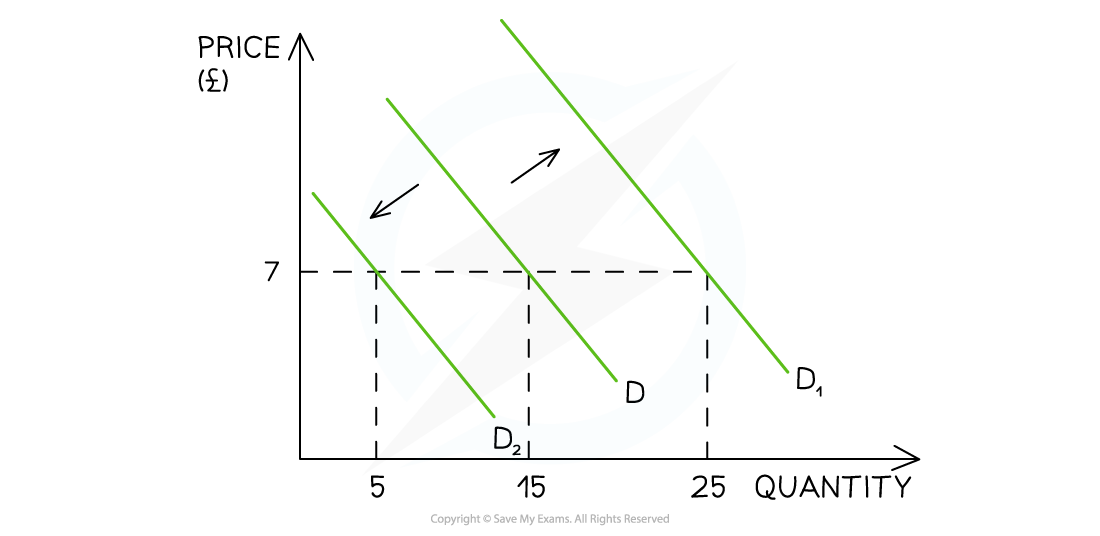Demand (Edexcel A Level Business): Revision Note
Exam code: 9BS0
An introduction to demand
Demand refers to the number of goods/services customers are willing to buy at a given price
Effective demand occurs when customers are willing and able (they have the money) to buy at a given price
There is an inverse relationship between the quantity demanded by customers and the price
As the price increases, the quantity demanded decreases
As the price decreases, the quantity demanded increases
Hence, the demand curve slopes downwards from left to right
This is illustrated in the diagram below
A simple demand curve

Diagram analysis
An increase in price from £10 to £15 leads to a movement up the demand curve from point A to point B
Due to the increase in price, the quantity demanded (QD) has fallen from 10 to 7 units
A decrease in price from £10 to £5 leads to a movement down the demand curve from point A to point C
Due to the decrease in price, the QD has increased from 10 to 15 units
Examiner Tips and Tricks
When writing about a movement along the demand curve, we use the term "quantity demanded".
Factors leading to a change in demand
A change in price leads to a movement along the demand curve
However, a change in any other factors affecting demand will shift the entire demand curve to the left or right
These are called "non-price factors affecting demand"
Non-price factors affecting demand

For example, if a firm increases its Instagram advertising, there will be an increase in demand as more consumers become aware of the product
This is a shift in demand from D to D1. The price remains unchanged at £7, but the demand has increased from 15 to 25 units
Changes in non-price factors

Diagram analysis
The initial demand curve is seen at D
At a price of £7, 15 units are demanded
If the price remains constant at £7 but demand decreases due to one of the non-price factors of demand (e.g. decreasing incomes), the entire demand curve shifts to the left, from D to D2
Demand has decreased from 15 units to 5 units
If the price remains constant at £10 but demand increases due to one of the non-price factors of demand (e.g. increased advertising expenditure), the entire demand curve shifts to the right, from D to D1
Demand has increased from 15 units to 25 units
Non-price factors affecting demand
Non-price factor | Explanation | Example |
|---|---|---|
Change in the price of substitutes |
|
|
Change in the price of complementary goods |
|
|
Change in consumer incomes |
|
|
|
| |
Fashions, tastes and preferences |
|
|
Advertising and branding |
|
|
Demographics |
|
|
Seasonality |
|
|
External shocks |
|
|
Examiner Tips and Tricks
Remember, a change in any non-price factor that leads to less demand will shift the entire demand curve to the left, but a change in any non-price factor that leads to more demand will shift the entire demand curve to the right.

Unlock more, it's free!
Did this page help you?